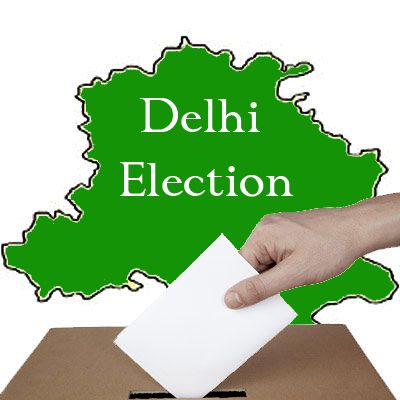🏛️ Delhi Assembly Elections: Everything You Should Know About the Backbone of India’s Capital Democracy
Delhi — India’s political heartbeat — doesn’t just reflect power at the Centre; it also mirrors grassroots governance through the Delhi Assembly Elections. From struggles for autonomy to modern-day electoral drama, Delhi’s legislative elections are as gripping as a political thriller and as significant as national polls.
- 🏛️ Delhi Assembly Elections: Everything You Should Know About the Backbone of India’s Capital Democracy
- 🕰️ History of Delhi Assembly Elections
- 🗳️ Timeline of Major Delhi Assembly Elections
- 🔍 Key Facts About Delhi Assembly Elections
- ❓ FAQs on Delhi Assembly Elections
- Q1: Who conducts Delhi Assembly Elections?
- Q2: How is Delhi different from other states in governance?
- Q3: Can Delhi’s government control police and law & order?
- Q4: Who was Delhi’s longest-serving Chief Minister?
- Q5: What are key voter issues in Delhi elections?
- 🎯 Significance of Delhi Assembly Elections
- 👥 Observance & Participation
- 🙌 Social & Daily Life Impact
- 📢 Important Highlights of Delhi Elections
- ✨ Wishing Message for Delhi Assembly Election Season
- 🧭 Conclusion: Why Delhi Elections Truly Matter to India
This article dives deep into the history, facts, timeline, FAQs, and daily impact of these crucial elections — not just for the people of Delhi, but for every Indian.
🕰️ History of Delhi Assembly Elections
Delhi wasn’t always the self-governing entity we know today. Here’s how the Delhi Legislative Assembly came to be:
🔹 Pre-Independence
Delhi was administered as a Chief Commissioner’s Province.
No legislative body existed.
🔹 1952: First Assembly
After the States Reorganisation Act, Delhi got its first legislative assembly with 48 members.
Chaudhary Brahm Prakash became the first Chief Minister of Delhi.
🔹 1956: Abolishment
The assembly was scrapped under the States Reorganization Act; Delhi became a Union Territory.
🔹 1991: Turning Point
Under the 69th Constitutional Amendment, Delhi became the National Capital Territory (NCT) with a limited statehood.
The Legislative Assembly was reinstated in 1993.
🗳️ Timeline of Major Delhi Assembly Elections
| Year | Key Highlights |
|---|---|
| 1952 | First-ever assembly elections held. |
| 1993 | Assembly reinstated. BJP forms govt under Madan Lal Khurana. |
| 1998 | INC wins, Sheila Dikshit begins 15-year rule. |
| 2013 | Hung assembly. AAP forms govt with Congress support but resigns in 49 days. |
| 2015 | AAP’s landslide win: 67 out of 70 seats. |
| 2020 | AAP repeats dominance with 62 seats. |
🔍 Key Facts About Delhi Assembly Elections
Total Constituencies: 70 Assembly constituencies.
Term: Each term lasts 5 years, unless dissolved earlier.
Eligibility: Any Indian citizen aged 18 or above can vote.
Political Landscape: Dominated by AAP, BJP, and INC.
Voter Turnout: Usually above 60%, which is high for a metro region.
CM vs LG Powers: The elected government handles education, health, electricity, while Delhi Police, land, and public order are under the LG (Lieutenant Governor).
Delhi has a unique dual governance model due to its capital status.
❓ FAQs on Delhi Assembly Elections
Q1: Who conducts Delhi Assembly Elections?
A: The Election Commission of India (ECI) conducts them, like other state elections.
Q2: How is Delhi different from other states in governance?
A: Delhi is a Union Territory with a Legislative Assembly, so power is shared between the Central Government, Lieutenant Governor, and State Government.
Q3: Can Delhi’s government control police and law & order?
A: No. Delhi Police, land, and law & order fall under the Ministry of Home Affairs via the LG.
Q4: Who was Delhi’s longest-serving Chief Minister?
A: Sheila Dikshit (INC), who served from 1998 to 2013.
Q5: What are key voter issues in Delhi elections?
A: Common concerns include education, health, power bills, water supply, pollution, and public transport.
🎯 Significance of Delhi Assembly Elections
Delhi may be small in size, but its elections hold massive political weight, for both practical and symbolic reasons:
1. National Political Testing Ground
Parties like AAP and BJP use Delhi to gauge urban voter sentiment, making these elections a barometer of political mood.
2. Model Governance
Innovations like mohalla clinics, free bus rides for women, and zero power bills in Delhi have inspired replications across India.
3. Media Attention Magnet
Due to its status as the capital, Delhi elections receive national media coverage, amplifying every issue.
4. High Awareness
With Delhi’s educated and vocal electorate, debates over policy vs politics are more prominent than vote-bank strategies.
👥 Observance & Participation
Election time in Delhi isn’t just a political ritual; it’s a festival of democracy:
Posters, slogans, and manifestos fill the air.
Schools become polling booths.
Polling day is a state holiday.
Thousands of staff and police are deployed for fair polling.
Door-to-door campaigns, street corner sabhas, and digital rallies make voters feel heard.
🙌 Social & Daily Life Impact
Delhi Assembly elections have real-time effects on the lives of residents:
💡 1. Electricity Bills
Policies have made electricity bills nearly zero for low consumption households.
💧 2. Water Subsidy
Delhiites benefit from 20,000 liters of free water monthly.
🏥 3. Health
Innovations like Mohalla Clinics and free medicines have improved public health.
🚍 4. Transport
Women travel free on DTC buses, enhancing safety and mobility.
📚 5. Education
Government schools transformed with smart classrooms, teacher training, and student engagement programs.
💼 6. Employment
Elections impact jobs through public hiring schemes, minimum wage regulation, and startup incubation policies.
📢 Important Highlights of Delhi Elections
Chief Election Officer of Delhi ensures free and fair elections.
EVMs with VVPAT used for transparency.
Police and paramilitary forces deployed for security.
Booth-level officers (BLOs) verify voter rolls.
Postal ballots and home-voting for senior citizens and PWDs.
✨ Wishing Message for Delhi Assembly Election Season
🗳️ “May every vote be a voice for truth, progress, and development. Happy Delhi Assembly Elections! Let democracy shine in every ballot and honesty prevail in every heart.”
🧭 Conclusion: Why Delhi Elections Truly Matter to India
The Delhi Assembly Elections are not just a local affair — they’re a national spectacle, reflecting how India’s democracy breathes in its capital. From pavement dwellers to policy makers, from the metro commuters to mohalla workers, everyone is a stakeholder.
In every 5-year cycle, Delhi decides:
Which party sets new urban governance benchmarks
Which policies trickle down to national discourse
Which leaders gain national spotlight
The balance of local autonomy and central oversight creates a unique political laboratory, making every Delhi Assembly election a test of not just governance, but democratic resilience.
So whether you live in Delhi or outside, know this:
When Delhi votes, India listens.









of course like your website however you need to take a look at the spelling on quite a few of your posts. Several of them are rife with spelling issues and I to find it very bothersome to tell the reality nevertheless I will definitely come again again.